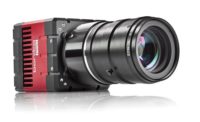WAYNE, NJ — Vision Research introduced a new camera series for its Phantom Miro line: the Miro LAB-Series.
The LAB-Series is specifically engineered for laboratory and office settings where the camera is connected to a computer for storage, control, and image analysis.
The new series offers the same award-winning, high-speed image capturing abilities as Vision Research’s other Phantom Miro series but designed for use in a controlled environment with a constant, reliable power source.
“We’ve taken great pride in the depth and versatility that we’ve presented our customers throughout the entire Miro family of cameras,” comments Rick Robinson, director of marketing for Vision Research. “Through the Miro family, Vision Research has offered specific high-speed imaging solutions for highly specialized applications, and the LAB-Series is no exception. The new LAB-Series was built to meet the specific needs of researchers and engineers that conduct high-speed imaging within an office-like setting. With the LAB-Series, we’ve combined simplicity and ease-of-use with the unmatched, high-performance capabilities expected of a Phantom camera.”
The LAB-Series comes in seven different performance levels giving users the ability to choose a camera model that best meets their needs for image resolution and acquisition speed. Models in the series range from the 1Mpx Miro LAB110 to the 4Mpx Miro LAB340. Maximum resolution ranges from 1280x800 to 2560x1600 with maximum frames per second ranging from 410 to1850.
The LAB-Series has a standard RJ-45 Ethernet connector and standard BNC connections for signaling. Direct connection to a computer in a lab environment enables users to easily save, view and analyze their high-speed cines. The Miro LAB-Series cameras also have the option of using the popular CineFlash non-volatile data storage system. With optional CineFlash modules, users can conveniently save multiple cine files on-camera in non-volatile memory for later retrieval.
For more information, visit www.visionresearch.com/blog.




